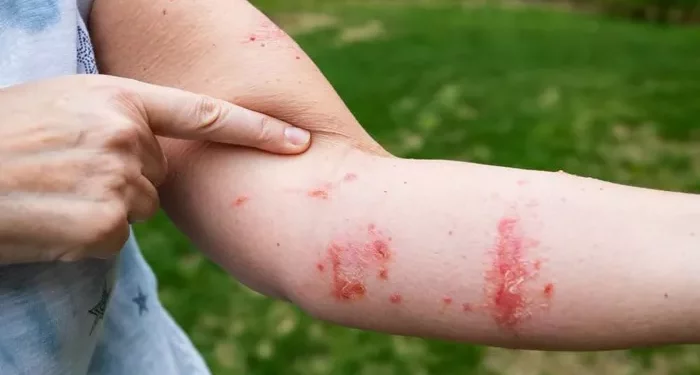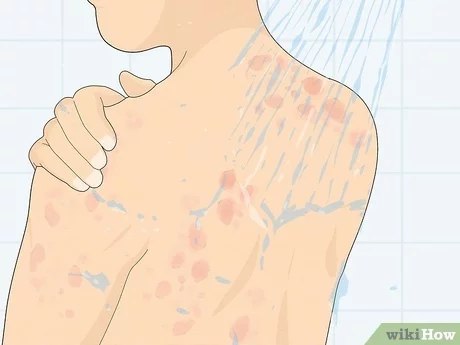Yes, shingles is contagious, but only to people who have never had chickenpox. Shingles, also known as herpes zoster, is caused by the varicella-zoster virus, the same virus responsible for chickenpox. After someone recovers from chickenpox, the virus remains dormant in the body. Years later, it can reactivate as shingles, which is a painful rash typically affecting one side of the body.
SEE ALSO: What Are the Major Causes of Shingles?
Considerations
Shingles can be spread through direct contact with the fluid from the blisters of an active shingles rash. This means that if someone who has never had chickenpox or the chickenpox vaccine comes into contact with the blister fluid, they can contract the virus, but it will manifest as chickenpox, not shingles. It’s important to understand that shingles itself cannot be spread from person to person, but the virus causing it can be transmitted.
How Shingles is Spread: The virus is primarily spread when the fluid from the blisters is touched. It is crucial to note that shingles is not spread through casual contact, such as touching someone’s skin where there is no rash, or through airborne particles like sneezing or coughing. The risk of spreading the virus is limited to direct contact with the rash.
Who is at Risk: Individuals who have never had chickenpox or the chickenpox vaccine are the ones at risk of contracting chickenpox from someone with an active shingles rash. This includes infants, pregnant women, and people with weakened immune systems. However, those who have had chickenpox or the chickenpox vaccine are generally immune to catching the virus from someone with shingles.
Addressing Common Misconceptions: There are many misconceptions surrounding the contagiousness of shingles. For example, some people believe that shingles can be spread through casual contact or by simply being in the same room as someone with the infection. This is not true. The virus requires direct contact with the blister fluid to be transmitted. Therefore, while shingles can be contagious, the methods of transmission are relatively limited compared to other viral infections.
When It’s Contagious:
The virus is most contagious during the initial stages when the rash is blistering. During this time, the fluid-filled blisters are most likely to transmit the virus to others. However, it can still be spread during the early stages of the rash, even before the blisters appear. Once the blisters have crusted over, which usually occurs about 7 to 10 days after they appear, the risk of spreading the virus significantly decreases.
Importance of Early Treatment: It’s important for anyone with shingles to seek medical attention promptly. Antiviral medications, such as acyclovir, valacyclovir, or famciclovir, can reduce the severity and duration of the rash. These medications can also lower the risk of transmission and help prevent complications such as postherpetic neuralgia, a condition where the pain from shingles continues long after the rash has healed.
Precautions for People with Shingles:
Encouraging Isolation: Individuals with shingles should take specific precautions to avoid spreading the virus, particularly around those who have never had chickenpox. They should avoid close contact with infants, pregnant women, and anyone with a compromised immune system, as these groups are at higher risk of severe complications if they contract chickenpox.
Hygiene Practices: Maintaining good hygiene is essential in preventing the spread of shingles. The rash should be covered with a bandage to minimize contact with the blisters. Additionally, frequent hand washing is crucial, especially after touching the rash or applying ointments. Personal items such as towels, bedding, and clothing should not be shared to prevent transmission.
Seeking Medical Attention: Anyone with symptoms of shingles, such as a tingling sensation on the skin followed by a painful rash, should seek immediate medical care. Early diagnosis and treatment can help reduce the severity of the symptoms and the likelihood of spreading the virus to others.
Tips
Difference Between Shingles and Chickenpox: Shingles and chickenpox are both caused by the varicella-zoster virus, but they manifest differently. Chickenpox typically occurs in childhood and is characterized by an itchy, widespread rash. In contrast, shingles usually affects older adults or individuals with weakened immune systems and presents as a painful, localized rash. While chickenpox is highly contagious and can be spread through the air, shingles is less contagious and requires direct contact with the rash.
Possibility of Postherpetic Neuralgia: One of the most concerning complications of shingles is postherpetic neuralgia (PHN), a condition where the pain from shingles persists long after the rash has healed. This chronic pain can be severe and debilitating, affecting the quality of life. The risk of developing PHN increases with age, especially in those over 60.
In conclusion, while shingles is contagious, the risk of spreading it is limited and manageable with proper precautions. Understanding how the virus is transmitted and taking steps to prevent its spread can help protect vulnerable individuals and reduce the overall impact of the disease.
Related Topics:


























